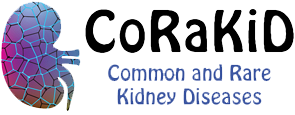Letter to the Editor Calcinosis cutis in epidermal necrolysis: role of caspofungin?
Résumé
Toxic epidermal necrolysis (TEN) is a rare life-threatening condition, usually drug-induced, characterised by a diffuse epidermal and mucosal detachment. Skin histology reveals pan epidermal necrolysis. Mucocutaneous healing usually lasts 2 to 3 weeks.1 Calcinosis cutis is reported in various skin diseases, with dystrophic calcification following tissue damage being its most common cause.2 We describe four patients who presented TEN and atypical healing retardation due to calcinosis cutis.
Domaines
Dermatologie
Fichier principal
 Colboc et al. - Calcinosis cutis in epidermal necrolysis role of .pdf (1.11 Mo)
Télécharger le fichier
Colboc et al. - Calcinosis cutis in epidermal necrolysis role of .pdf (1.11 Mo)
Télécharger le fichier
Origine : Fichiers produits par l'(les) auteur(s)
